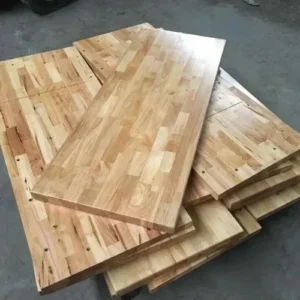acacia wood boards for sale
Wood Boards for Sale: A Comprehensive Guide
acacia wood boards for sale, When it comes to woodworking, construction, or DIY projects, selecting the right wood boards is crucial. Whether you’re building furniture, framing a house, or crafting decorative items, the type of wood you choose affects durability, appearance, and functionality.
This guide covers everything you need to know about wood boards for sale, including types, uses, buying tips, and frequently asked questions (FAQs).
Types of Wood Boards for Sale
Wood boards come in various types, each suited for different applications. Here are the most common categories:
1. Hardwood Boards
Hardwood comes from deciduous trees (like oak, maple, and walnut) and is known for its durability and aesthetic appeal.
- Oak – Strong, durable, ideal for furniture and flooring.
- Maple – Smooth finish, great for cabinets and cutting boards.
- Walnut – Rich color, used in high-end furniture and decor.
- Cherry – Ages beautifully, popular for fine woodworking.
2. Softwood Boards
Softwood comes from coniferous trees (like pine, cedar, and spruce) and is often used in construction and outdoor projects.
- Pine – Affordable, easy to work with, common in framing and shelving.
- Cedar – Naturally resistant to insects and rot, great for outdoor furniture.
- Spruce – Lightweight, used in construction and musical instruments.
3. Engineered Wood Boards
These are manufactured wood products designed for stability and cost-efficiency.
- Plywood – Layers of wood veneer glued together, used in construction and cabinetry.
- MDF (Medium-Density Fiberboard) – Smooth, uniform surface, ideal for painted furniture.
- Particleboard – Budget-friendly, used in shelving and low-cost furniture.
- OSB (Oriented Strand Board) – Made from wood strands, used in sheathing and subfloors.
4. Reclaimed Wood Boards
Eco-friendly option sourced from old barns, factories, or pallets. Popular for rustic and vintage-style projects.
Common Uses for Wood Boards
| Type of Wood | Best Uses |
|---|---|
| Hardwood (Oak, Maple) | Furniture, flooring, cabinetry |
| Softwood (Pine, Cedar) | Framing, outdoor decks, fences |
| Plywood & MDF | Shelving, cabinets, DIY projects |
| Reclaimed Wood | Accent walls, rustic furniture, decor |
Where to Buy Wood Boards
You can purchase wood boards from:
- Local lumberyards – Best for high-quality, custom-cut wood.
- Home improvement stores (e.g., Home Depot, Lowe’s) – Convenient for standard sizes.
- Online retailers (e.g., Etsy, eBay, specialty wood shops) – Good for rare or reclaimed wood.
- Sawmills – Ideal for bulk purchases and raw lumber.
Factors to Consider When Buying Wood Boards
- Project Requirements – Choose wood based on strength, appearance, and moisture resistance.
- Grade & Quality – Look for straight, knot-free boards for fine woodworking.
- Moisture Content – Kiln-dried wood is best for indoor projects to prevent warping.
- Sustainability – Opt for FSC-certified wood if eco-friendliness is a priority.
- Budget – Hardwoods are more expensive than softwoods or engineered wood.
FAQs About Wood Boards for Sale
1. What’s the difference between hardwood and softwood?
Hardwood comes from deciduous trees (oak, maple) and is denser, while softwood comes from conifers (pine, cedar) and is lighter and easier to work with.
2. Which wood is best for outdoor projects?
Cedar, redwood, and pressure-treated pine are excellent for outdoor use due to their natural resistance to rot and insects.
3. How do I prevent wood from warping?
- Store wood flat in a dry area.
- Use kiln-dried lumber.
- Seal the wood with a protective finish.
4. Can I use plywood for furniture?
Yes! Plywood is great for cabinets, shelves, and even tables when properly finished.
5. What’s the cheapest type of wood board?
Pine and particleboard are among the most affordable options.
6. How thick should wood boards be for shelving?
For standard shelves, ¾-inch thick boards (like plywood or hardwood) provide good support.
7. Is reclaimed wood safe to use?
Yes, but ensure it’s cleaned and free of nails, pests, or harmful chemicals.
8. What’s the best wood for a cutting board?
Hardwoods like maple, walnut, and cherry are ideal due to their durability and food-safe properties.
9. Can I stain or paint MDF?
Yes, MDF takes paint well but should not be stained (it lacks natural grain).
10. Where can I find exotic wood boards?
Specialty lumberyards or online retailers often carry exotic woods like teak, mahogany, and ebony.
Showing the single result
